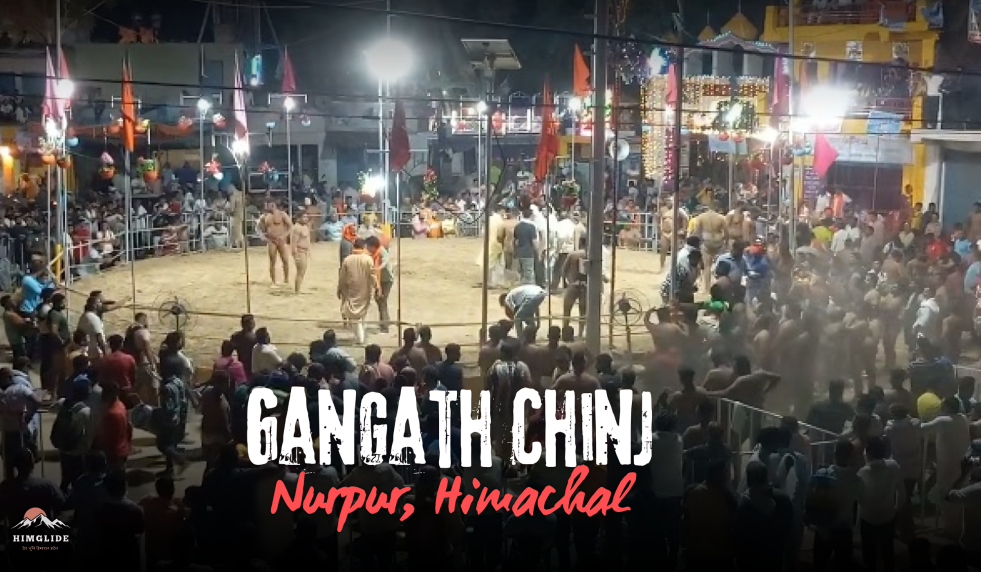Imagine standing on a Himalayan cliff, surrounded by pine-covered peaks and the sound of rushing water echoing through the valley. This is Himachal Pradesh – a land where rivers are more than just bodies of water; they are sacred lifelines, ancient storytellers, and vital arteries of life and livelihood.
The rivers in Himachal Pradesh carve their way through glaciers, forests, valleys, and towns, nourishing everything in their path. With origins high in the Himalayas, these rivers shape not only the geography but also the culture, agriculture, and spirituality of the region. In this article, we’ll explore a complete list of major rivers in Himachal Pradesh, their sources, and the districts they flow through.
Why Rivers Are the Lifelines of Himachal Pradesh
Before we dive into the list, let’s understand the significance of rivers in Himachal Pradesh:
- Agricultural Backbone: Rivers irrigate terraced fields and orchards.
- Hydropower Source: Himachal is a major hub of hydropower projects in India.
- Cultural & Spiritual Importance: Many rivers are considered sacred and feature in local legends.
- Tourism & Adventure: Rivers like Beas and Sutlej support rafting, camping, and eco-tourism.
List of Major Rivers in Himachal Pradesh with Names and Origins
1. Sutlej River (Satluj)
- Origin: Lake Rakshastal near Mount Kailash in Tibet
- Enters HP: Shipki La pass, Kinnaur district
- Districts Covered: Kinnaur, Shimla, Bilaspur, Mandi
- Significance: Longest river in Himachal Pradesh and a key hydropower source. Major projects: Bhakra Nangal Dam, Nathpa Jhakri.
2. Beas River
- Origin: Beas Kund, Rohtang Pass, Kullu district
- Districts Covered: Kullu, Mandi, Kangra
- Significance: Known for scenic valleys and river rafting. Culturally revered in the Vedas and Mahabharata.
3. Ravi River
- Origin: Bara Bhangal area, Kangra district
- Districts Covered: Chamba
- Significance: One of the five rivers of Punjab (Panchnad). Flows through deep gorges and supports traditional agriculture in Chamba valley.
4. Chenab River (Chandrabhaga)
- Origin: Confluence of Chandra and Bhaga rivers at Tandi, Lahaul-Spiti
- Districts Covered: Lahaul & Spiti, then flows into Jammu & Kashmir
- Significance: Known for its rugged, icy terrain and glacial source. Has hydroelectric potential but remains largely untapped in HP.
5. Yamuna River
- Origin: Yamunotri Glacier, Uttarakhand
- Enters HP: Sirmaur district
- Districts Covered: Sirmaur, Shimla (partial)
- Significance: Sacred river, important for agriculture in the lower hills. Tributaries like Giri and Tons originate in HP.
Also Read: Famous Food of Himachal Pradesh – Traditional Dishes from the Hills
Important Tributaries and Their Origins
1. Parvati River
- Origin: Mantalai Glacier near Pin Parvati Pass
- Flows Through: Parvati Valley, merges with Beas at Bhuntar
- Note: Known for scenic treks and hot springs in Kasol and Manikaran.
2. Spiti River
- Origin: Kunzum Range
- Flows Through: Spiti Valley
- Note: A cold desert river, merges into the Sutlej in Kinnaur.
3. Baspa River
- Origin: Baspa Hills, near Indo-Tibet border
- Flows Through: Sangla Valley in Kinnaur
- Note: A picturesque river known for apple orchards and the Baspa Hydel Project.
4. Tons River
- Origin: Bandarpunch Glacier
- Enters HP: Western parts of Sirmaur
- Note: Largest tributary of the Yamuna River.
5. Giri River
- Origin: Jubbal, Shimla
- Flows Through: Sirmaur
- Note: Major tributary of Yamuna, key for local irrigation.
River Systems of Himachal Pradesh – At a Glance
| River Name | Origin | Districts in HP | Tributary of |
| Sutlej | Lake Rakshastal, Tibet | Kinnaur, Shimla, Bilaspur, Mandi | Indus |
| Beas | Beas Kund, Kullu | Kullu, Mandi, Kangra | Sutlej (indirect) |
| Ravi | Bara Bhangal, Kangra | Chamba | Chenab |
| Chenab | Tandi (Chandra + Bhaga) | Lahaul-Spiti | Indus |
| Yamuna | Yamunotri (Uttarakhand) | Sirmaur | Ganga |
Role of Rivers in Himachal’s Culture and Ecology
- Spiritual Sites: Rivers like Beas (Manali), Parvati (Manikaran), and Yamuna (Paonta Sahib) are linked with ancient temples and myths.
- Valley Formation: Most popular valleys – Kullu, Chamba, Sangla, Spiti – are formed by river systems.
- Hydropower Capital: HP produces nearly 25% of India’s total hydroelectric power due to these rivers.
- Eco-Tourism and Trekking: Parvati and Spiti river valleys attract trekkers, while rivers like Beas support white-water rafting.
Conclusion
The rivers in Himachal Pradesh are more than natural features—they are storytellers of the land, silent carriers of culture, and the pulse of Himachali life. Whether you’re a geography enthusiast, a traveler, or a student, understanding these rivers deepens your appreciation of the region’s natural richness and timeless charm.
From the frozen streams of Spiti to the lush banks of the Beas, every river in Himachal has a story worth exploring.
FAQ’s
1. Which is the longest river in Himachal Pradesh?
The Sutlej River is the longest river in Himachal Pradesh. It enters through Shipki La in Kinnaur and flows through Shimla, Bilaspur, and Mandi, playing a vital role in irrigation and hydropower.
2. How many major rivers are there in Himachal Pradesh?
There are five major rivers: Sutlej, Beas, Ravi, Chenab, and Yamuna, along with key tributaries like Parvati, Baspa, and Giri that enrich the state’s river system.
3. Which river flows through Kullu Valley?
The Beas River flows through the scenic Kullu Valley, supporting agriculture, tourism, and activities like rafting. It originates from Beas Kund near Rohtang Pass.
4. Where does the Chenab River originate?
The Chenab River originates at Tandi in Lahaul, where the Chandra and Bhaga rivers meet. It flows through the high-altitude valleys before heading into Jammu and Kashmir.
5. Are there any rivers that enter Himachal Pradesh from outside?
Yes, the Yamuna River starts in Uttarakhand but enters Himachal via Sirmaur district. Several of its tributaries, like the Giri and Tons, originate within Himachal Pradesh.







